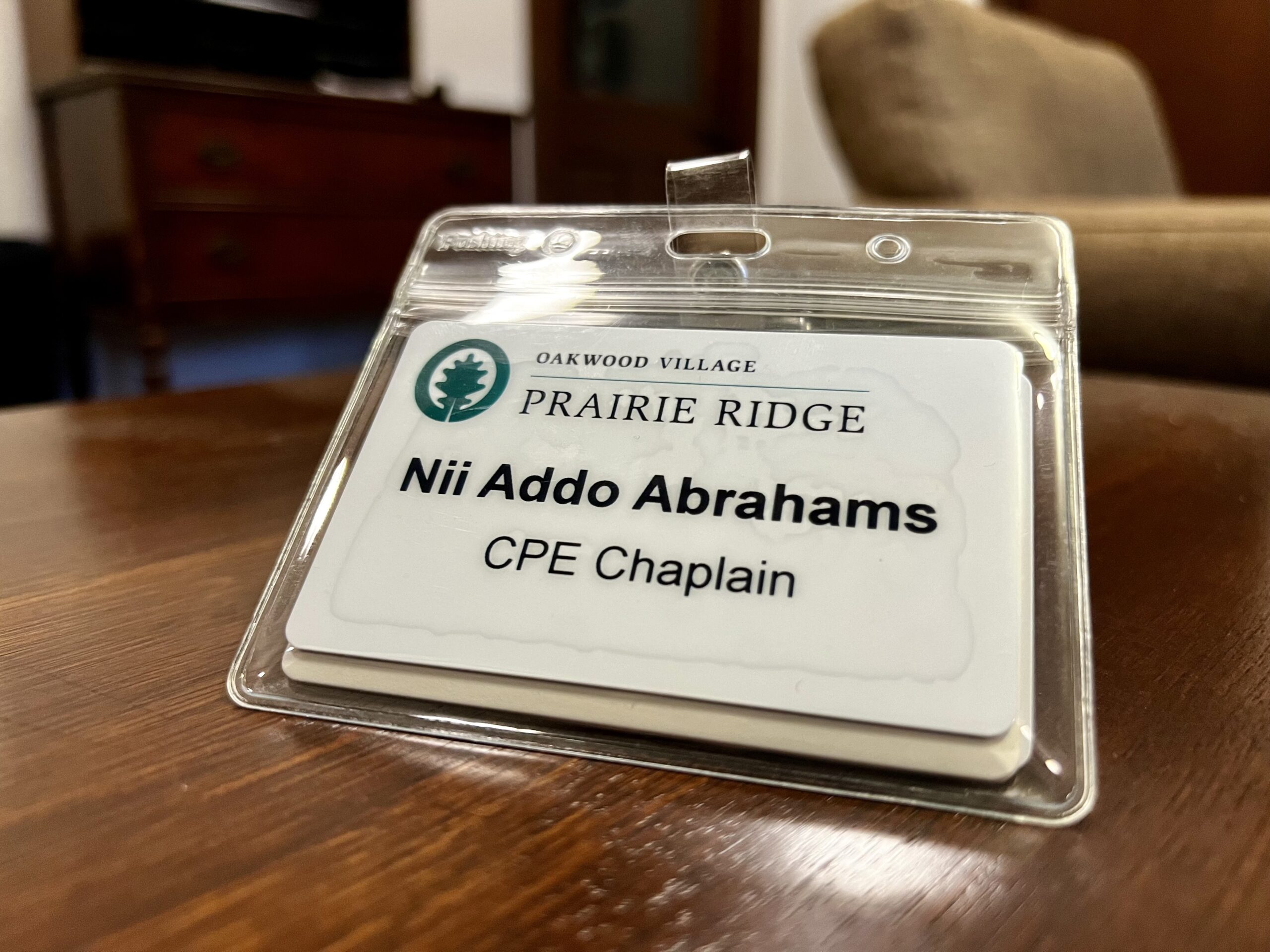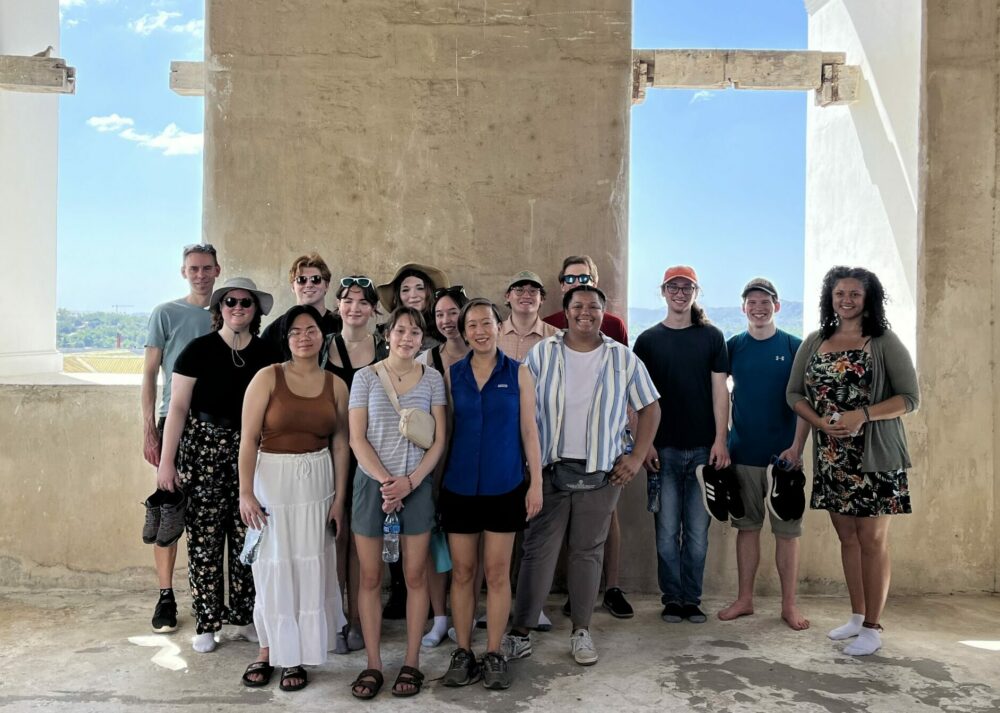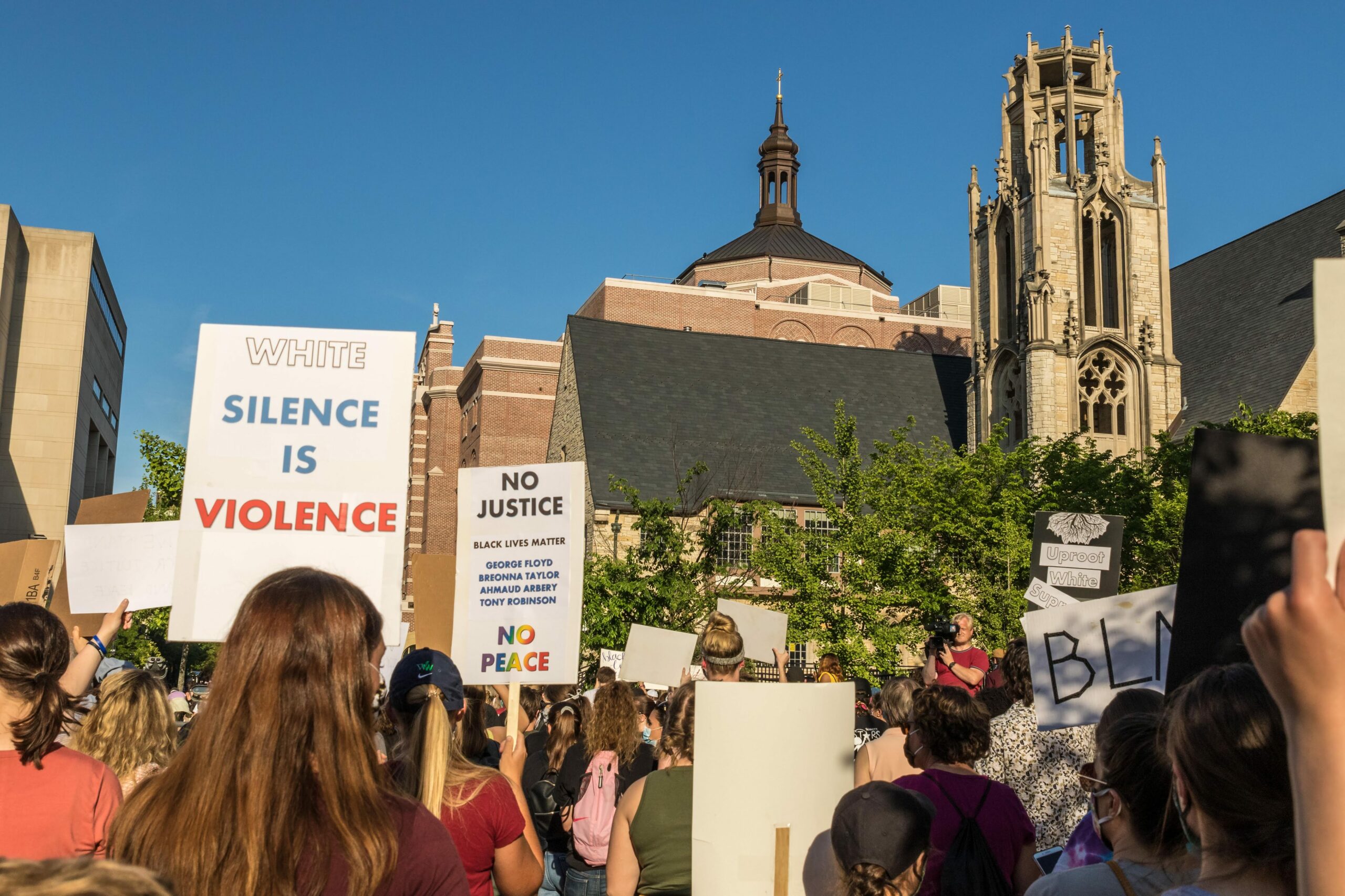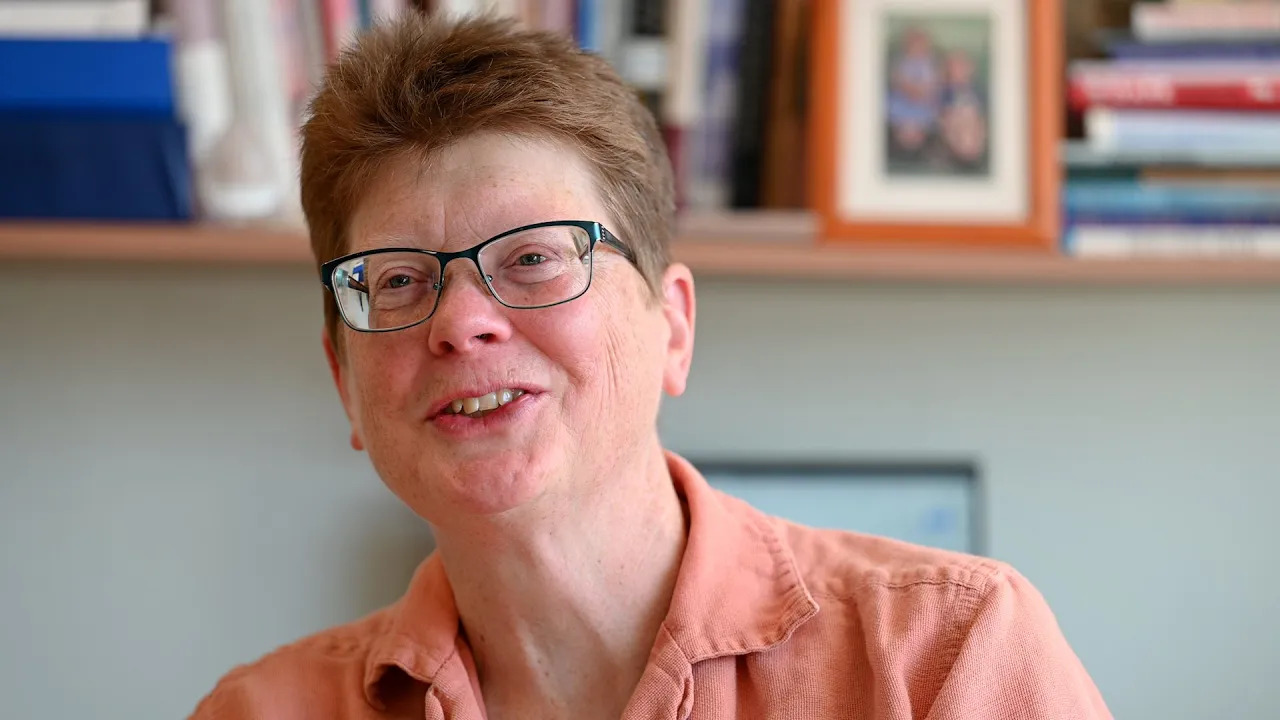Mark is the Executive Director at Pres House. How did a group of folks from…

CPE: Clinical Pastoral Education
As part of my journey toward ordination in the PC(USA), I recently completed a unit of Clinical Pastoral Education (CPE) at Oakwood Village Prairie Ridge, a senior living facility here in Madison. Though I have shared a bit about my chaplaincy experience in a recent sermon, I’d like to share a little more about what CPE was like, what I learned, and what’s next for me on the ordination path.
There are, broadly speaking, two components to CPE.1 The first is the clinical experience. Most often, you serve as a chaplain in a clinical setting – a hospital, psychiatric facility, etc. There are a lot of similarities between chaplaincy and pastoral ministry (what I do at Pres House), but a key difference is that as a chaplain, you are a care provider, like a doctor or a therapist. Your primary job is to assess and treat spiritual and emotional needs – often in a short period of time – rather than offering the kind of long-term spiritual formation that pastors do.
The second component of CPE is the educational experience. You join a cohort of other CPE chaplains that meets weekly with a trained educator. During your cohort meetings, you discuss your experiences as chaplains and present case studies from your clinical settings called “verbatims” in which you write up patient encounters as close to verbatim as possible, presenting both your external and internal dialogue to your cohort for feedback (yes, verbatims can be as intense and uncomfortable as you might imagine). The combination of clinical and educational components is meant to help folks gain self-awareness as pastoral care providers. To put it simply, you do the thing, and then you dig into why you did the thing the way you did it in order to zoom in on your strengths and growing edges as a pastor and person.
I learned a lot of practical skills during CPE for assessing spiritual care needs and offering purposeful interventions. I also learned a lot about the healthcare system and how challenging it is for patients and care providers right now to get what they need. The most meaningful learning, though, was what I learned about myself. Let me share one example.
Most of us don’t realize how many assumptions we make about other people until we have to explain our thought processes to someone else. I often entered residents’ rooms assuming they did not actually want me to be there – that whatever wisdom or compassion I had to offer could just as easily be offered by someone else, and they would probably prefer the presence of another person they knew better than this stranger. While I pride myself on being a relatively self-aware person, I did not realize how little I valued my own presence as a pastor, especially when offering care to much older adults. But I was challenged by my cohort – and by residents and staff, too, if I’m being honest – to embrace my unique gifts as a spiritual care provider and to trust that God had something for me to do and be for the residents at Oakwood. My imposter syndrome sometimes feels like a granite block, but I am slowly chipping away at it, thanks in part to this CPE experience.
During the six months I worked at Oakwood Village, I met some incredible people – former CEOs, Madison business owners, scientists, authors, refugees, pastors, and trailblazers in more industries than I could name. I also met people who lived mundane and ordinary lives. Some people were comfortable with aging and death; others were terrified. Some had families who were supportive, present, and invested in their care; others were alone. Each resident was a full, complex, beloved human. The fact that Oakwood Village Prairie Ridge is just a five-minute walk from my house was a poignant reminder of how easily we overlook the people and stories all around us. Were it not for CPE, I would have ridden my bike past Oakwood Village every day and never given the people inside a second thought. What are the opportunities for connection and relationship we miss because we are too absorbed in our own story?
It is easy to romanticize an experience like CPE. The truth is that it was very hard – and not just because it meant working six days a week! I heard a lot of painful and heartbreaking stories. I spent a good chunk of time with residents who have dementia, and learning how to enter into their reality was some of the most challenging and beautiful work I have ever done. More than once, I made plans with a resident to visit them again after the weekend, only to return the following week to learn they died while I was away. On one particularly painful occasion, a beloved resident died while I was in the building, and I was unable to be there with him and his family at the moment of death simply because I was on another floor and did not know he was actively dying. Chaplains are tasked with bearing tremendous spiritual and emotional burdens, and I commend anyone who takes on this work as their vocation. It is not for the faint of heart.
So, now that I’ve finished CPE, what’s next for me on the ordination track? Since I finished my ordination exams in January, CPE was the last “big” item on the to-do list. Right now, I am a “candidate” for ordained ministry, and the candidacy stage lasts for a few more months before I have my final oral examination in front of the presbytery, which will likely happen in the spring. Hopefully, you’ll be able to call me Reverend around this time next year. I remain grateful to Pres House for supporting me on this journey.
1 If you want more detail, check out the FAQs from one of the national accrediting bodies for chaplains.



